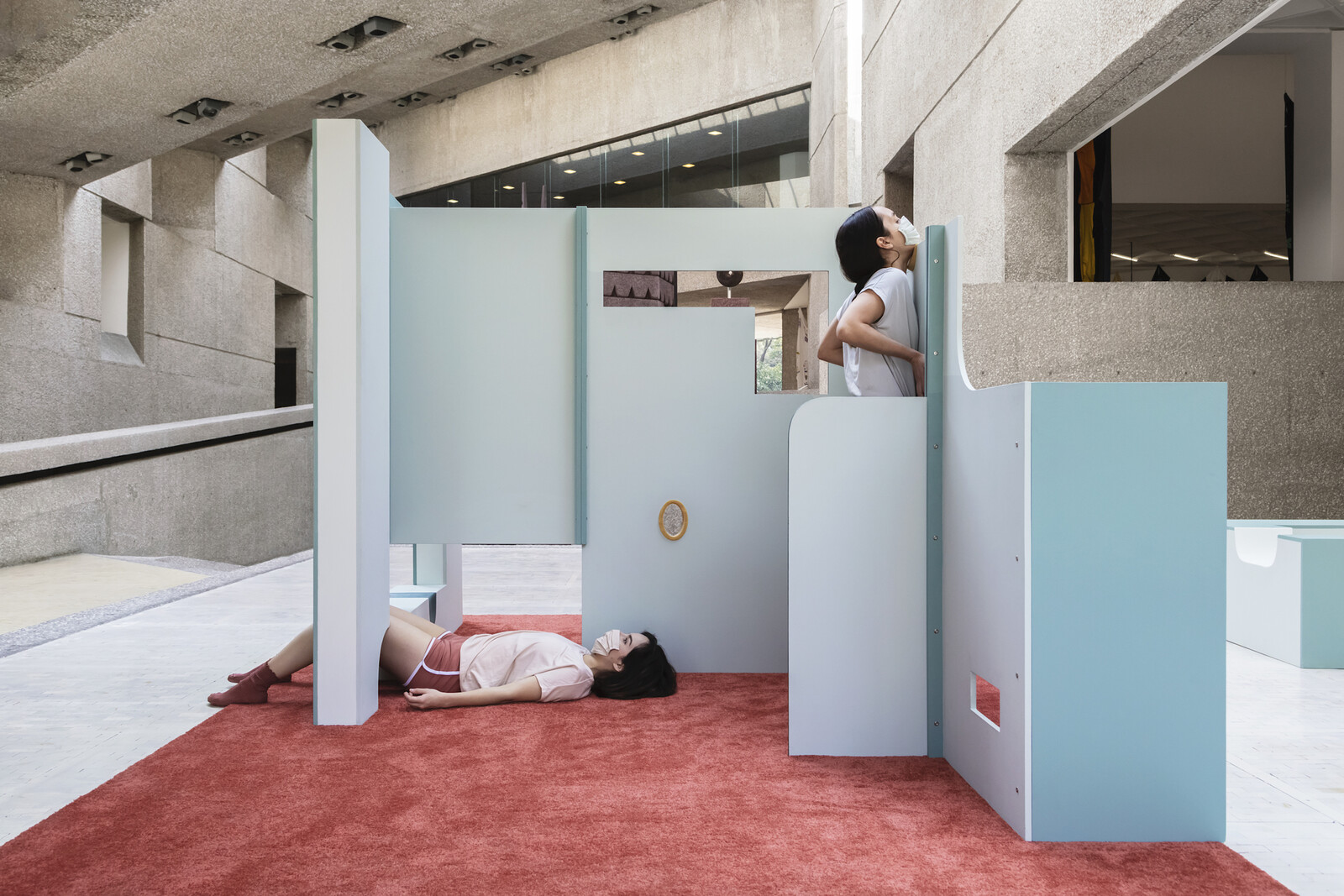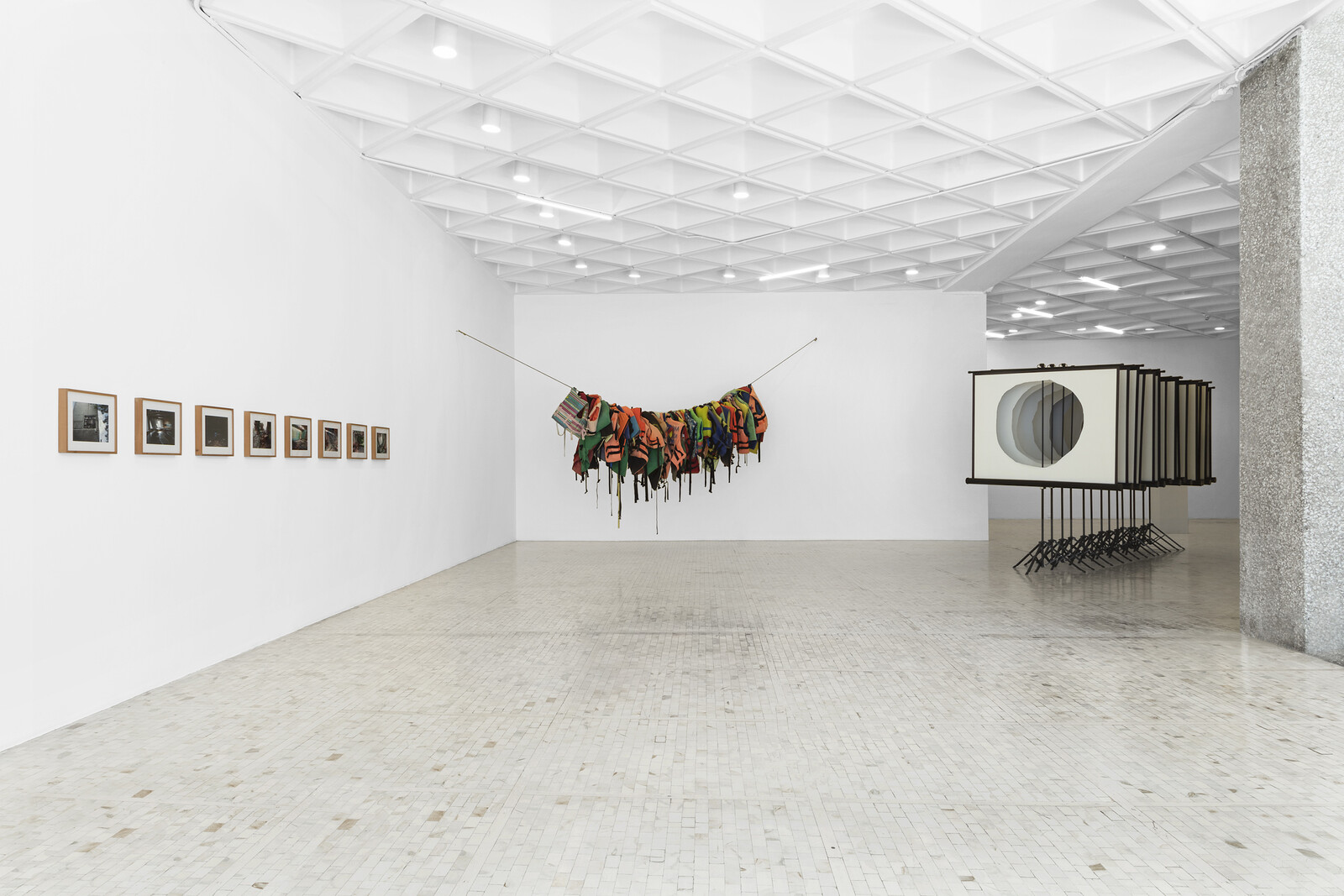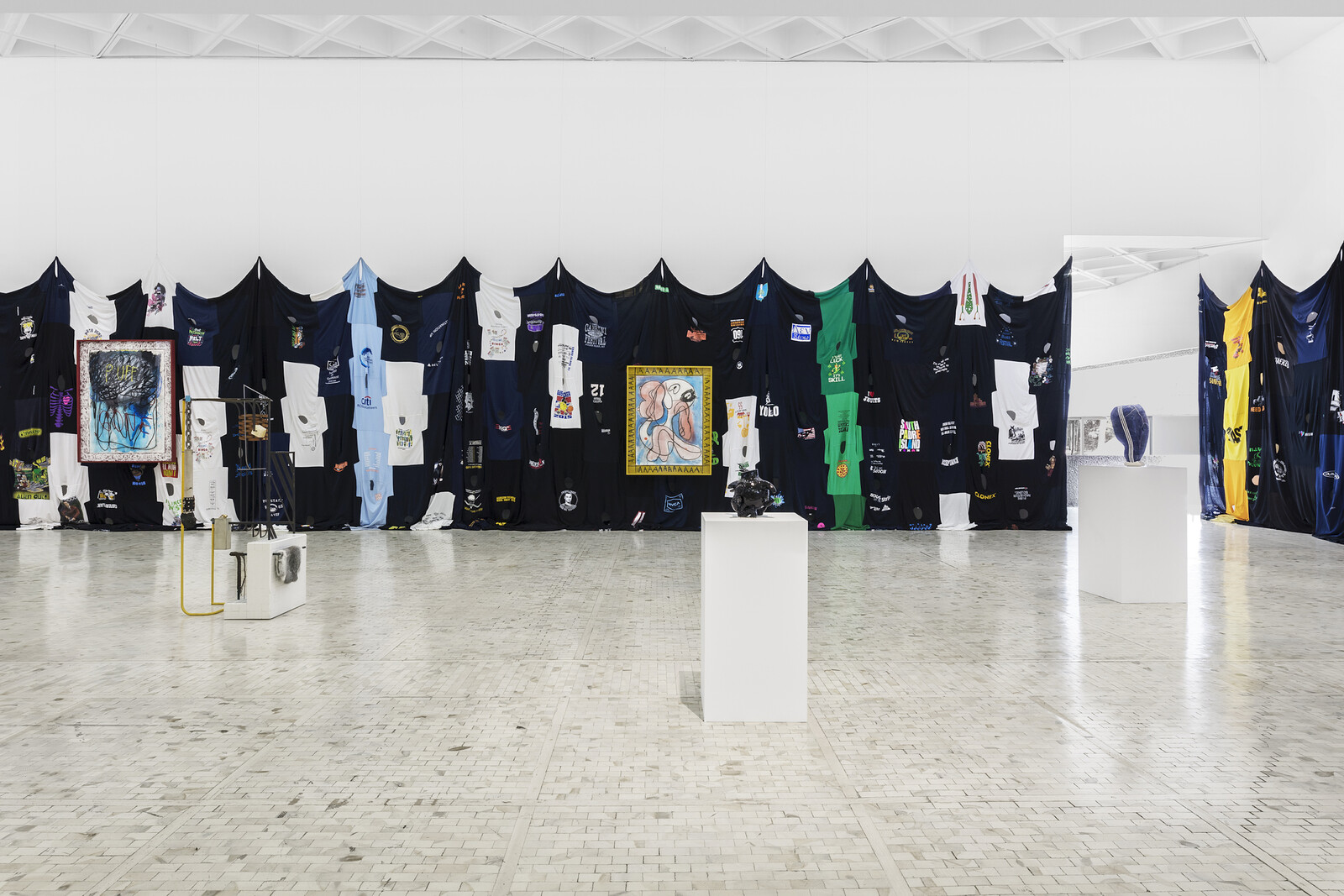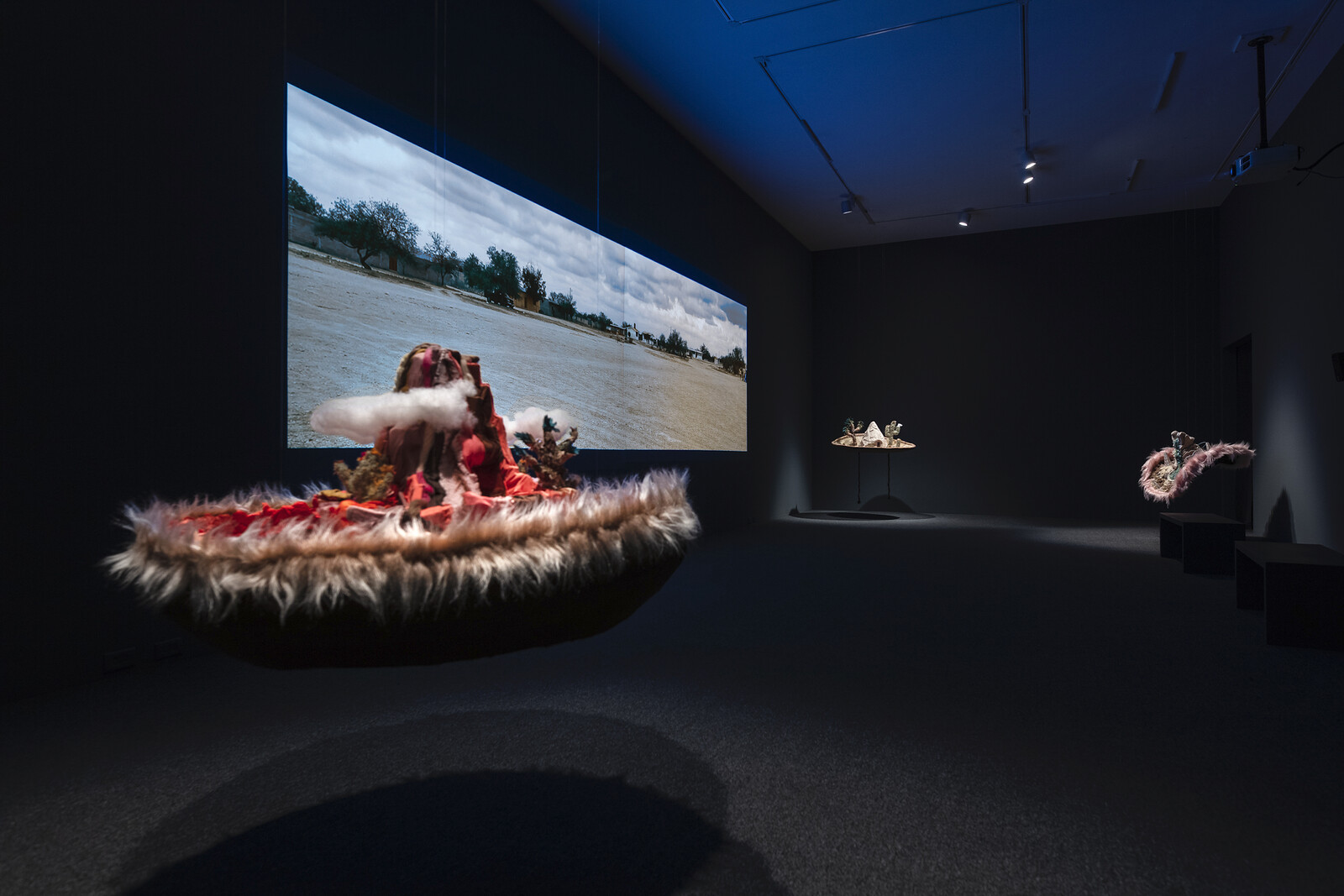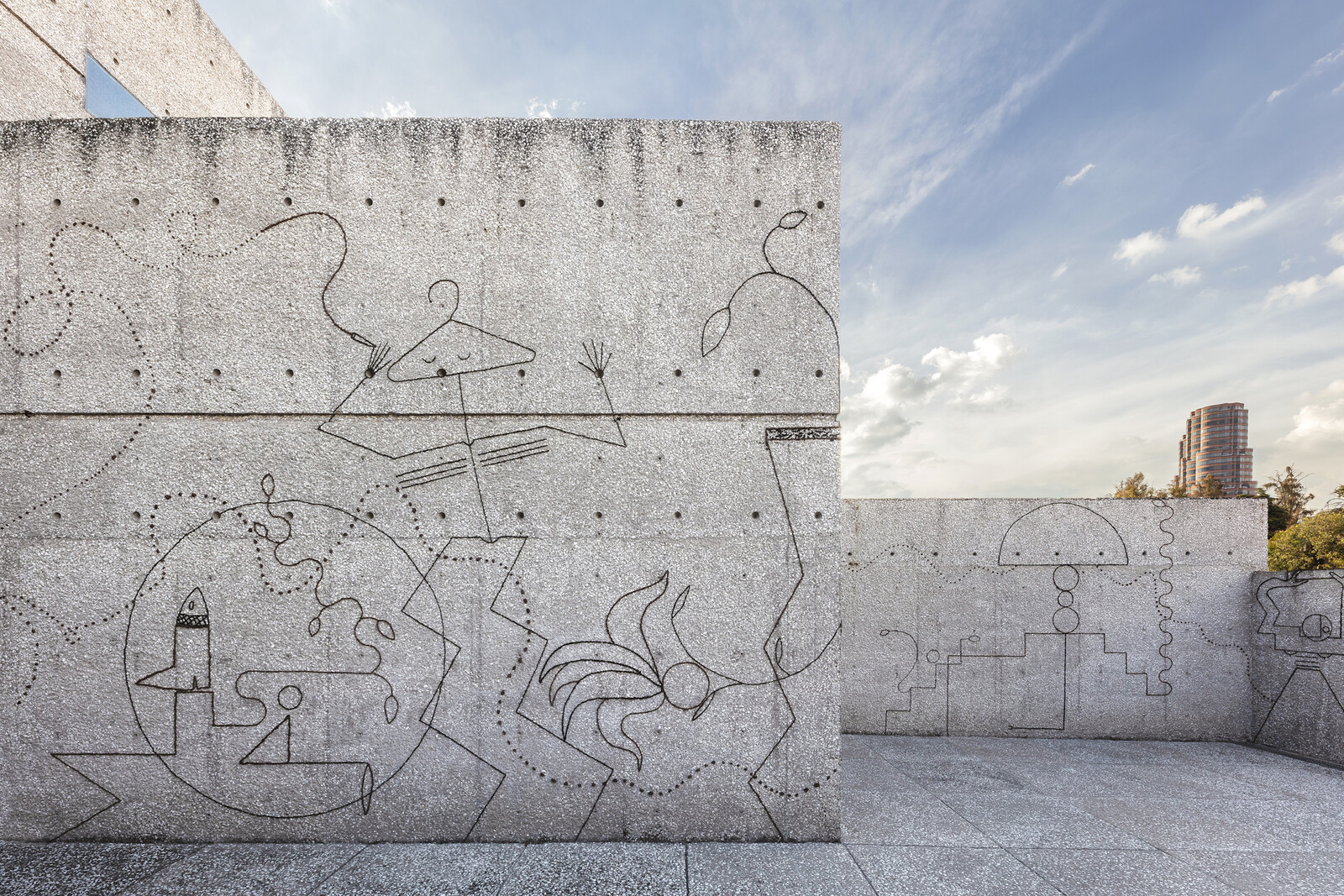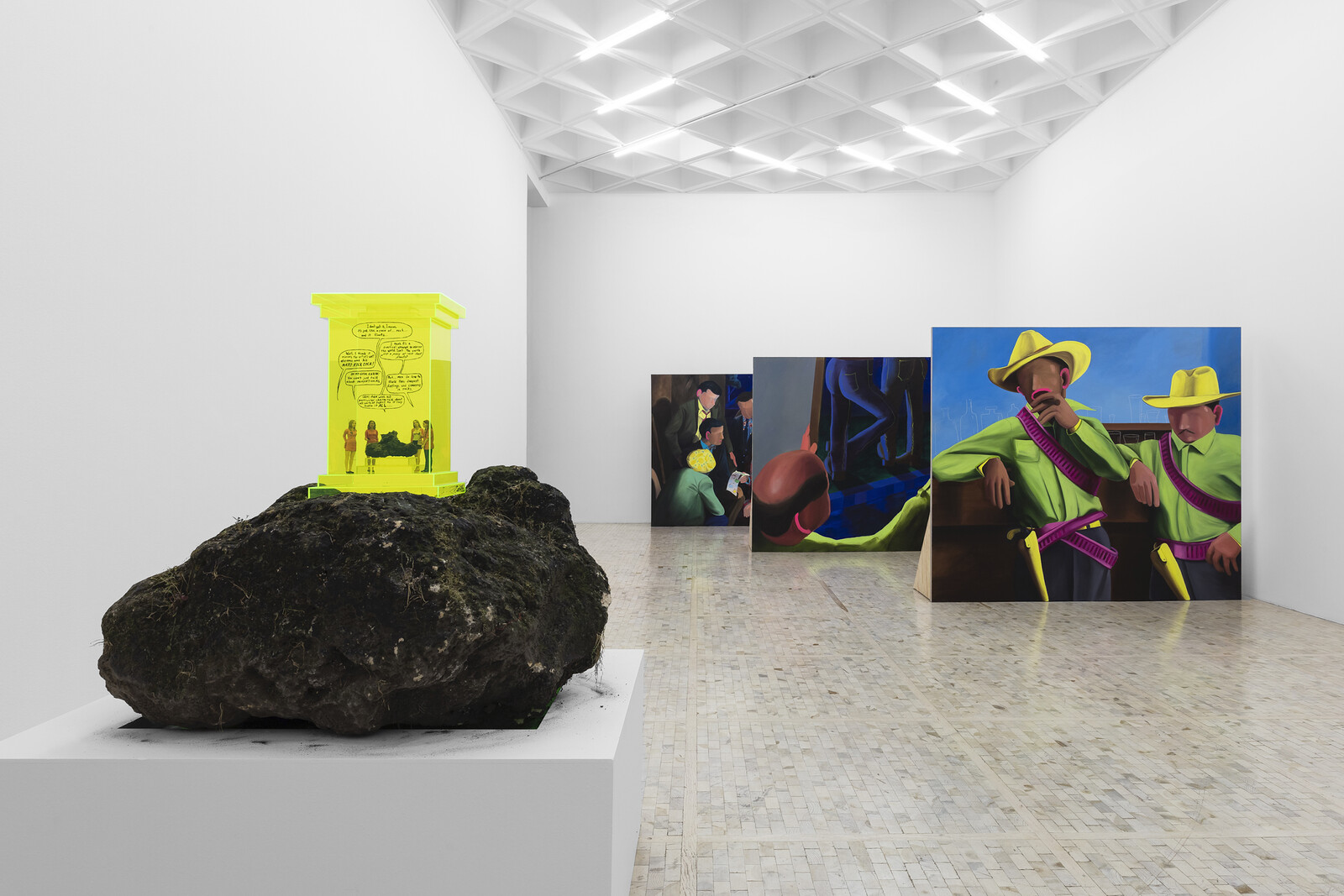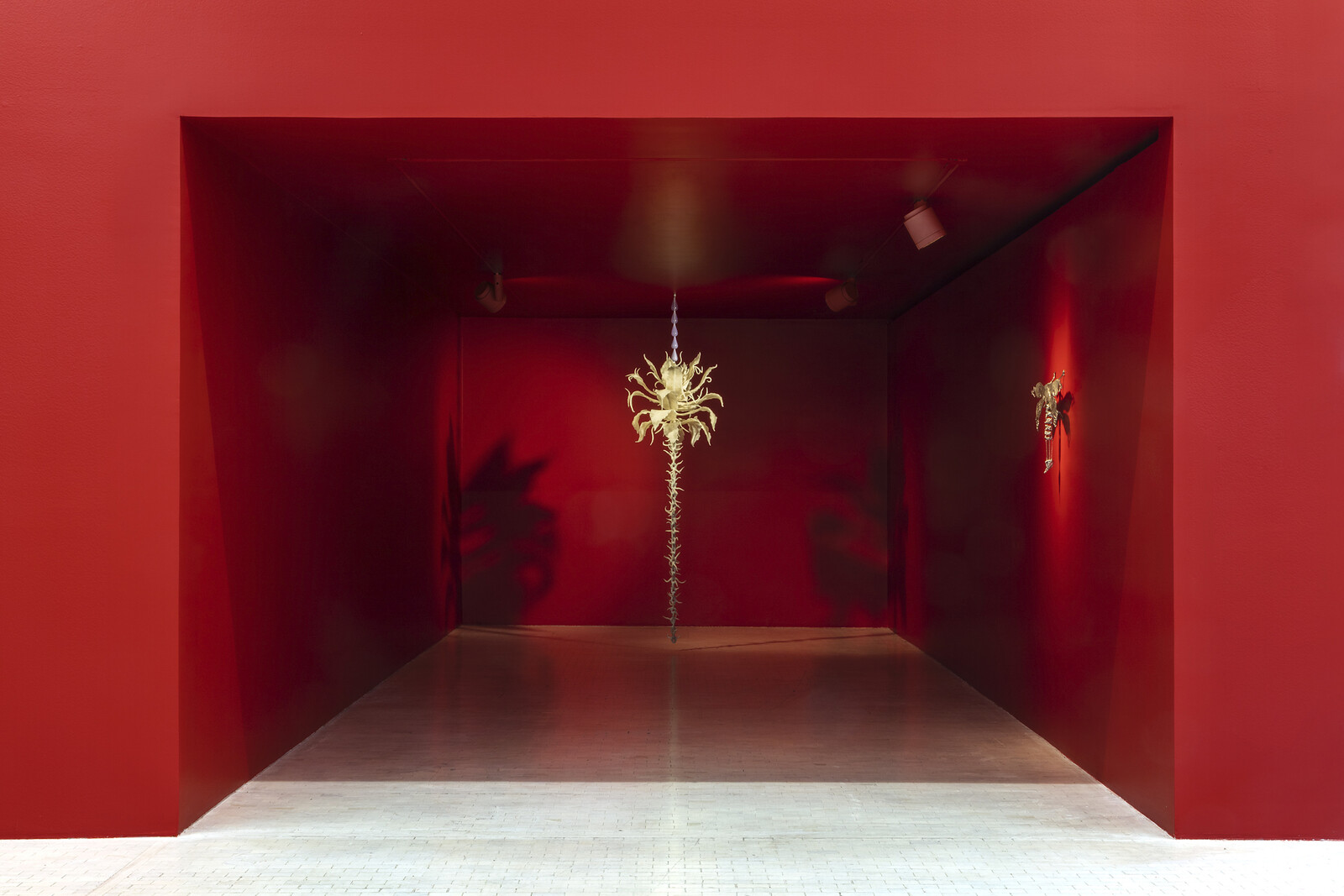The group show “OTRXS MUNDXS,” at Museo Tamayo, is a watershed moment: it’s the first standalone exhibition in the museum’s recent history to focus on young, local artists, all of whom work in Mexico City. 1 Since the museum was founded in 1981, it has largely dedicated its spaces to promoting international artists and spearheading state-private alliances in the museum sector. That this inclusive, self-aware moment arrives in the throes of a pandemic, and likely out of institutional necessity rather than want, is unimportant. Is curating local—if only because of travel restrictions and vanishing state budgets—better than the usual fare of pre-packaged US exhibitions? It is to me.
It’s exciting to walk into a show full of familiar names and objects now comfortably nestling in the institutional bosom, which is why it is also disappointing that the conceptual bag into which these practices were thrown is so, well, generic. “OTRXS MUNDXS”—a non-binary spelling of the Spanish for “other worlds”—essentially attempts to other the work of 39 very different artists and artist groups and in doing so make the museum appear sympathetic to the zeitgeist. But there’s a contradiction in claiming these new practices as radical breaks with the past while at the same time indulging in the institutional habit of seeking to impose historical continuity with earlier generations. What else can one make of the gesture of putting older, established artists such as Miguel Calderón and Francis Alÿs together in the same “heterogeneous, multicultural group” as emerging ones including Madeline Jiménez Santil, Berenice Olmedo, or Julieta Gil? The show’s shaky yet gigantic theoretical framework would have us believe that they are all, at the end of the day, talking about the same things, divided in this exhibition into four thematic sections: capitalism and domination; seriality, identity and obliteration; entropy, speculation and visualization; and body and materiality. And really, who isn’t?
The show’s conceptual looseness is reflected in sections that are almost completely unintelligible: a combination of over-ambitious themes, awkward spatial distribution, and the absence of wall texts limit one’s ability to draw connections between the exhibited pieces.2 Take the large central gallery, “entropy, speculation, and visualization,” which opens with a corner crowded with works by Miguel Calderón. These include a series of photographs of ruins (El balance de las improbabilidades 1, 2, 3, 4, 5, 6, 7, 8, 9, 10, 11 , 12, 13 [The Balance of Improbabilities], 2017), a hanging line of ragged, sun-drenched life-jackets familiar from any Mexican coastal town (Untitled, 2020), and a row of free-standing projector screens with increasingly large holes cut out from them (Pantalla hipnótica 2 [Hypnotic Screen 2], 2020). The juxtaposition of these pieces made me think of Michael Yonan’s “fear of the tchotchke,” the anxiety suffered by art historians who fear they are wasting their attention on insignificant yet overvalued objects. It’s a grouping of works that seems to share nothing but gallery space with Julieta Gil’s digital renderings of feminist protest graffiti on beloved local monuments, Nuestra victoria I-V [Our Victory I-V] (2019–20), or with Josué Mejía’s chuckle-worthy art-political cartoons needling the relationship between Mexican modernism and US corporations, Exposición comprensiva de arte mexicano I-V [Comprehensive exhibition of Mexican art I-V] 2020)—to name just a couple.
Yet there are moments of beauty and lucidity in this exhibition. Jiménez Santil’s free-standing graphite-on-linen abstraction, ¿Qué se repite? [What’s repeated?] (2020), is a lovely surprise. The piece is displayed outside the gallery and is visible through a window. The sunlight that drenches it accentuates the contrast between its black geometric patterns, which resemble the punched cards used in early computers, and its white background. Jiménez Santil is known for displaying her canvases in unlikely places, imbuing pieces which might otherwise look traditional with a sense of agency. This is evidenced by another work, Personalidades incoloras [Colorless personalities] (2020), a diptych paired on a wall inside the gallery and looking noticeably more inert than the one peeking in from the window‚ which seems to be the point.
Another highlight arrives in one of the last galleries, oddly and dramatically painted blood red. In a small nook to one side of the space, the artist duo ASMA install Poción Multijugos [Polyjuice Potion] (2020), a delicate totem hanging from the ceiling: a chain covered in paraffin wax and resin sculpted to resemble the thorny stem holding a strange flower, equal parts desert-like and tropical, at once angelic and monstrous. Theatrical lighting projects wispy shadows on both sides of the object; one of these is cast across a wall on which is displayed an eerily beautiful dragonfly, Extraño reflejando mamíferos [Stranger Reflecting Mammals] 2020), into the wings of which is carved a scene depicting human legs in techy footwear meeting a wild canid, a hand reaching out towards its head. The object feels both dug up from somewhere in another future and a relic of a moment that hasn’t yet happened—and maybe never will.
In “OTRXS MUNDXS,” those other, possible non-binary worlds—as staged within a dominant art institution—can look very similar to our own: chaotic, unreadable, disjointed, and centralized. That this is a feature of our state-techno-corporate system and not a bug—the goal, and not the failure of capitalism—doesn’t quite seem to register in a show that ultimately hedges its bets, co-opting marketable, young “alterity” while cementing its authority in the brave new world. Still, there’s reason to be intrigued by this local institutional shift towards historicizing our current chaos, and to hope that these young artists’ careers will be as well looked after as the museum has been.
This sentence was adjusted at the museum’s request to acknowledge its 1985 exhibition “17 Artistas de hoy en México,” curated by Cécile Jean and featuring Victoria Blasco, Alejandro Arango, Miguel Cervantes, Rafael Doniz, Lauren Cohen, Javier de la Garza, Sergio Hernández, Juan José Gurrola, Magali Lara, Rocío Maldonado, Alberto Montaño, Rowena Morales, Gerardo Suter, Germán Venegas, Roberto Turnbull, and Carlos Aguirre.
QR codes direct visitors with smart phones to an online exhibition guide, accessible at https://www.museotamayo.org/otrxs-mundxs-cedulario
